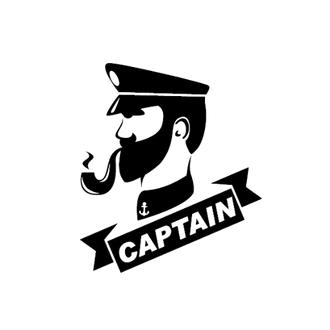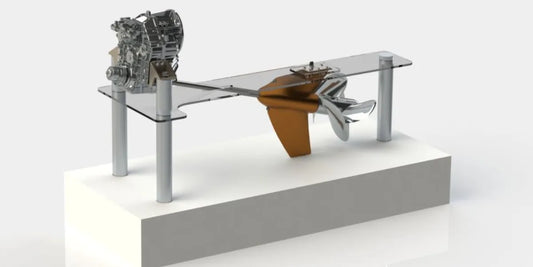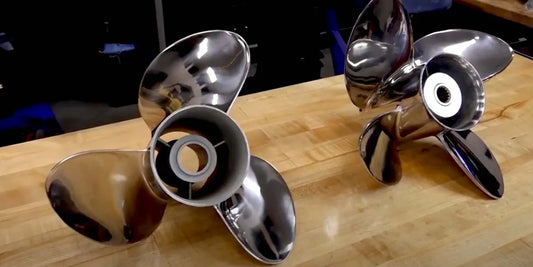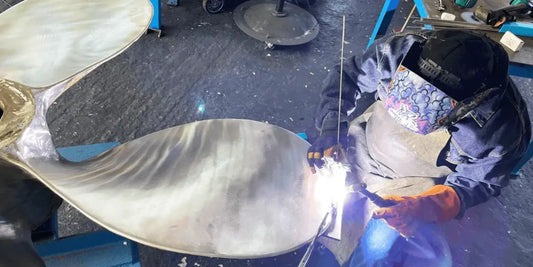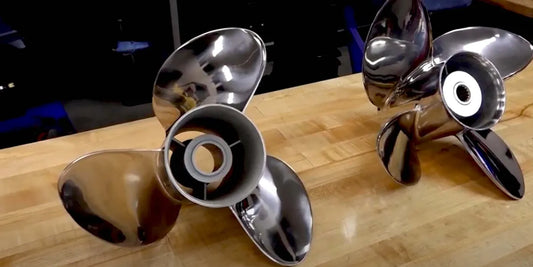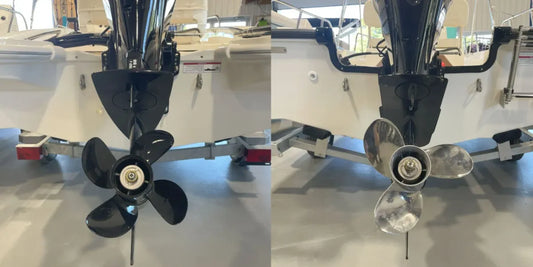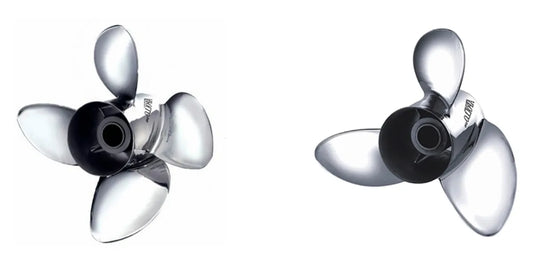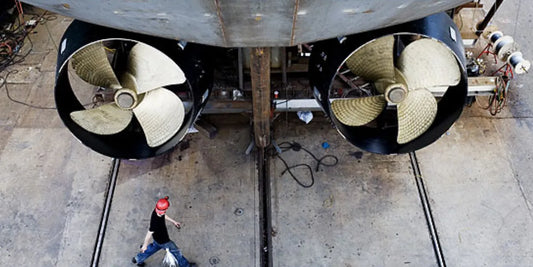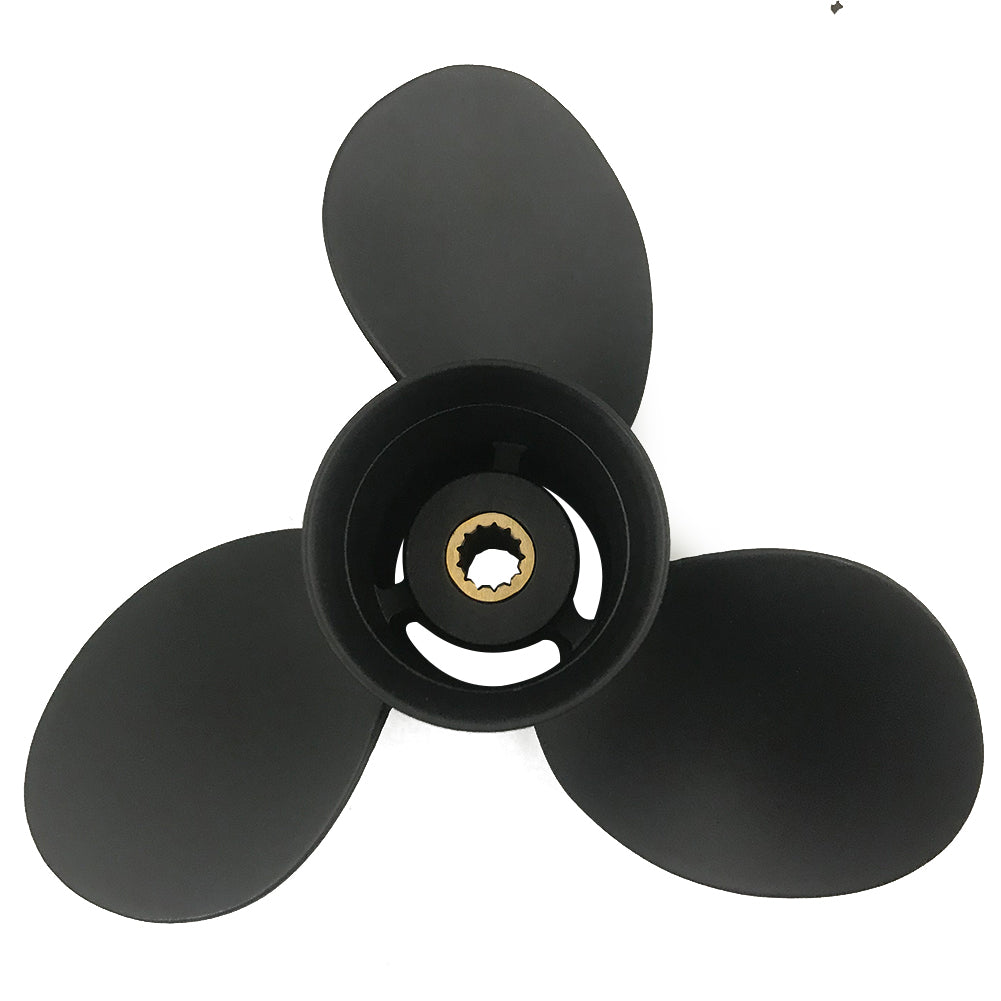According to experts, selecting the best propeller, by nature, will affect a vessel's speed toward its chosen goal. At some point, the boat owner faces the major decision: should one purchase a 4-blade propeller or remain with the 3-blade design? Both offer particular advantages and drawbacks in terms of speed, fuel consumption, handling, and general on-water performance. This article examines the pros and cons of each type, providing you with valuable insights and practical information to help make the best decision for your specific boating needs. Understand the differences between these propeller types if you want to maximize your vessel's capabilities for speed, a smooth ride, or fuel savings.
Understanding Propeller Basics

What Is a Prop and Its Importance?
The propeller, commonly referred to as the "prop," is a crucial component of any motorized vessel, imparting thrust from the engine forward or backward into the water. These propellers propel the ship through force by rotating their blades and displacing water. They fundamentally determine the speed, fuel efficiency, and maneuverability of a boat.
The importance of propeller selection cannot be prioritized enough. An optimally matched propeller can result in superior performance, ensuring the engine operates at peak efficiency, achieves good fuel economy, and places minimal strain on the engine. Factors such as blade material, pitch, diameter, and the number of blades determine how a propeller performs. For instance, stainless steel props are more durable and better suited for high-speed handling; aluminum props, on the other hand, are lighter and less expensive to service. Selecting the right prop ensures smooth rides, reduces jitters, and yields long-term savings on fuel and maintenance costs. Understanding the physics employed in various types of props enables boaters to tailor their boats to suit their unique performance requirements and preferences better.
Anatomy of the 3 Blade and 4 Blade Propellers
Since it is all about the performance of one over the other in the boating world, understanding the structural differences is crucial. A 3-blade propeller is more efficient and reaches a higher top-end speed, which is suitable for recreational boaters who want to maximize speed and fuel efficiency. As it has less area, drag is also reduced, allowing it to accelerate quickly and deliver a smooth overall ride.
Conversely, 4-blade props are designed with stability and torque in mind. These props provide the best grip in the water when towing, performing water sports, or carving through choppy waters. Increasing the blade count also means increasing the surface area to produce better thrust, smoother operation, and improved mid-range performance, which, in most cases, is the tradeoff for a slight sacrifice in top-end speed compared to the 3-blade design.
According to the recent data, a 4-blade prop can enhance boat handling by as much as 10% during tight turns and heavier loads. Three-blade might offer a 5-8% fuel efficiency benefit at higher speeds. Ultimately, the choice between 3- and 4-blade props depends on what a user values most - whether it is speed, stability, or versatility for various water conditions.
How Propeller Design Affects Performance
Propeller design is one of the primary criteria that influence the vessel's overall performance and efficiency. Blade number, shape, pitch, and material composition are features considered by the naval architect when describing how the propeller interacts with water to create speed and consume fuel, while also facilitating the handling properties of the propeller and the vessel. For example, with a higher blade count, such as 4, thrust remains more stable under varying load conditions. It is therefore usually chosen for heavier displacement craft or for use in rough water. On the contrary, 3-blade propellers will attain higher top-end speeds and consume less fuel due to less drag.
Besides the number of blades, the pitch of the propeller, as noted, and the distance a propeller would travel forward in one rotation if no slip were assumed, also govern acceleration and top speed. A lower pitch is ideal for towing or fast acceleration, while a high pitch is meant for achieving higher velocity, albeit at the cost of slow starting. Furthermore, modern advancements in propeller materials, including lightweight composites and corrosion-resistant alloys, ensure durability, thereby enhancing performance in various environments. These design elements together highlight the necessity of choosing a propeller best suited to the particular vessel and usage scenario for optimal efficiency and performance.
Performance Comparison of 3 Blade Prop vs 4 Blade Prop

Speed and Efficiency: 3 Blade vs. 4 Blade Props
The speed and efficiency of the 3-blade and 4-blade propellers can be varied by several factors, depending mainly on the specific use and type of vessel. Vessel-to-vessel, the 3-blade prop may be preferred to get the best top-end speed because it offers less drag force. The other small boats, speedboats, or racing boats, aimed at faster acceleration and maximum velocity, choose the 3-blade prop. With fewer blades, a propeller presents less resistance to water, thus operating with better efficiency at higher RPMs.
On the other hand, 4-blade propellers typically take greater advantage of efficiency in situations that require steadiness and smoother handling. The extra blade provides a greater grip in the water, which translates to greater midrange cruising efficiency and fuel-saving efficiency while maintaining speed. The 4 blades offer extra thrust, making them suitable for towing, offshore fishing, or choppy waters. Additionally, a 4-blade design typically means quieter operation and reduced vibration, both of which contribute to overall comfort for the operator.
Ultimately, the decision between a 3-blade and a 4-blade propeller should be made after considering the vessel type, application, and performance requirements. As midship speed and efficiency are something to consider, the correct selection of a propeller may make a significant difference in how well that vessel operates and how long it lasts.
Acceleration and Handling With Different Blades
Vessel acceleration and handling are realized through the number of blades of a propeller. The 3-blade propeller creates less drag compared to a 4-blade propeller, allowing the boat to accelerate faster. It reaches better top-end speeds than the vessels can achieve efficiently. On the flipside, such a design gives rise to slightly uncertain handling characteristics in rough seas. First and foremost, a 4-blade propeller instills better handling and stability characteristics in rough water or when towing heavy loads. With this additional blade, more traction is created on the water, particularly during sharp turns or at low speeds, making it a good option for boats that require heavy manual controls in varying conditions, such as fishing boats or cruisers. Additionally, 4-blade propellers enable better planing at low RPMs, which significantly smooths the operation.
Marine performance data typically show that, considering certain types of vessels and their applications, 4-blade options are increasingly chosen by users seeking stability and consistent handling. Alternatively, for speed and fast acceleration, a 3-blade option may be preferred. Knowing these distinctions well should ensure that a proper choice of propeller is made according to specific performance parameters, with the concept of efficiency opposed to that of function.
Noise and Vibration Levels in Propeller Types
Considering vibration and noise caused by the propeller as an essential criterion for overall efficiency and comfort offered by the vessel, generally, a four-blade propeller operates with lower vibration and noise than a three-blade setup. Having another blade in the picture makes the thrust more evenly distributed, allowing less turbulence and smoother operation. The 4-blade configurations are preferred where a certain amount of silence is required, such as in fishing or tourism.
From a different perspective, 3-blade propellers give slight noise while providing speed and efficiency advantages at high RPM because they are subjected to less drag. Vibration may be more severe in 3-blade settings insofar as smaller craft or heavier loading operations are concerned. Design-wise, modern innovations incorporate optimized blade geometry, better materials, and balanced construction to attain noise reduction and smooth performance. The selection of the correct type of propeller has to consider these aspects and the intended use of the vessel, to ensure its own comfort on board as well.
Case Studies: Real-World Applications

Vessels Using 3-Blade Props: Performance Insight
A three-blade propeller is used by many vessels because it strikes a good balance between speed, efficiency, and adaptability. Some of the vessels that prefer these propellers are pleasure craft, fishing boats, and small commercial vessels. Its advantage is that a 3-blade design produces higher-end speed at moderate load levels, allowing the ship to be somewhat agile and fuel-efficient. However, under very heavy-loading conditions, some compromises may be necessary.
Performance studies reveal that when 3-blade props are appropriately selected in relation to the engine power and hull design of the boat, their performance is optimal. For example, 3-blade props of moderate pitch have been shown to increase fuel efficiency for mid-sized motorboats at cruising speed. And because these props are designed to be aerodynamic, they reduce drag that interferes with speed, especially for light and high-performance boats.
In terms of durability, the advanced materials, such as stainless steel or high-strength alloys, employed in the construction of Sea Star 3-blade propellers enable them to resist repeated changes in water conditions, from those encountered in placid lakes to saltwater environments. They create less resistance for the engine, allowing an increased lifespan for both the propeller and its machinery.
In other words, for commercial operators, the 3-blade type is a workable compromise: it offers quick acceleration and reliability without relinquishing the flexibility needed for different purposes. This pertains to coastal tourism industries as well as small boat-type marine transport, where fuel economy and performance reliability must be given the highest importance.
The vessels using 4-blade prop: observed advantages
The vessels fitted with 4-blade propellers sometimes enjoy better performance and are more stable in operation, especially in rough seas. This exemplary configuration makes the thrust less efficient at lower speeds, which is generally desirable when vessels must maneuver accurately, such as tugboats or fishing boats. The greater blade surface area reduces cavitation, ensuring smoother operation and less wear over time.
More blades generally mean less noise, so the 4-blade propellers will be quieter and feel smoother in their propulsion; hence, they would be chosen for passenger ferries and luxury yachts, where experiencing tranquility is of utmost importance. On the other hand, these propellers work best under heavy loading conditions, where maintaining speed and stability is a paramount concern. Thanks to improvements in propeller design and materials, the 4-blade configuration now offers both efficiency and durability, i.e., it can adequately serve modern marine operations.
Comparative Data from 2025 Trends in Propeller Usage
The post-2025 trends in propeller requirements highlight the growing need for innovative and efficient marine configurations. Notably, 4-blade and 5-blade propellers significantly reduce fuel consumption, having a somewhat substantial influence; some studies suggest that this can result in a 12% improvement in energy efficiency compared to a 3-blade, old-fashioned design. This enhancement can be especially well-applied to commercial shipping, where fuel costs are significant.
Besides the above considerations, noise reduction has meanwhile become a feature that enjoys special focus on passenger vessels and luxury yachts. Recent studies have shown that 4-blade propellers guarantee quieter propulsion, reducing noise emission by approximately 8-10 dB compared to other designs. Beyond performance, newer materials like carbon composites and titanium alloys further enhance durability, increasing the lifespan of propellers by 15-20%.
The trends also affirm the move towards motormounts tailor-made for specific vessel types and operational requirements, where stability, speed, and environmental considerations are vital. Such insights highlight how the industry's advances in the propeller continue to address the practical demands of sustainability, economy, and passenger comfort.
Choosing the Right Propeller for Your Boat

Factors to Consider: Boat Type and Intended Use
Choosing a propeller for your vessel requires knowledge of two key factors: the vessel's characteristics and its intended use. Small craft, such as fishing or recreational crafts, usually require an emphasis on efficiency and maneuverability. Aluminum three-blade propellers are ubiquitous, as they offer good speed while translating into fuel economy. High-performance boats, such as speedboats or racing boats, will have the speed enhanced and cavitation reduced by four or five-blade stainless steel propellers.
For larger vessels, such as yachts or commercial ferries, durability and complete optimization of load-carrying capacity are the primary areas of concern. Propeller designs at this stage are optimized for maximizing thrust and minimizing maintenance needs, both of which are crucial for long-term operational efficiency. Furthermore, boat owners involved in specialized activities, such as watersports, will seek out cupped propellers that provide improved acceleration and consistency in towing speed.
Understanding these distinctions ensures that the propeller is compatible with the vessel's operational requirements, thereby improving performance, fuel consumption, and overall enjoyment on the water. Through customizations tailored to your use case, you will experience enhanced efficiency, power, and longevity that complement your boating experience.
Expert Advice on 3 vs 4-blade Props
Choosing between 3-blade and 4-blade propellers is an art in itself, as the subtle changes in performance style can make a significant difference. Generally, 3-blade props achieve greater top-end speed and yield better fuel economy, making them suitable for activities such as cruising or light fishing. They truly create less drag in the water, thereby allowing the engine to achieve high RPMs and unlock the potential for speed.
In contexts requiring stability, faster acceleration, and great-midrange performance, it has been the application of 4-blade propellers. In fact, it can produce smooth handling in rougher water or maintain more thrust when towing or traveling at low speeds. While 4-blade props may be slightly slower at achieving speed, the increase in the number of blades increases the surface area, ensuring greater control over the ride.
Recent tests and analyses highlight the importance of selecting the right propeller, which depends on the engine type, hull design, and intended use. Tests might be useful to determine that 3-blade props generally perform well in applications requiring short bursts of speed, whereas 4-blade setups work better at producing constant power under load, such as towing wakeboarders or navigating through choppy waters. Matching such findings with the unique needs of your vessel ensures its optimal performance, resulting in increased engine efficiency and quieter operation over time.
Common Myths and Misconceptions about Blade Propellers
Knowledge is abundant regarding propelling technology; however, several myths persist, often causing confusion among boat owners and negatively influencing their choices regarding propellers. One of the most common myths suggested is that more blades always mean more speed; however, more blades might enhance thrust and reduce vibration, but they might also increase drag and limit top speed. Blade numbers must be determined based on the vessel's weight, engine power, and application needs.
Another popular misjudgement is that all propellers of the same size will perform identically. Differences in blade pitch, cupping, materials, and shape all play essential roles in performance and are therefore considered key elements that define propeller performance. Even slight differences between designs can cause significant contrasts in efficiency and durability. For example, slightly cupped blades may provide a better grip in the water and reduce slippage, thereby affecting acceleration and fuel consumption in certain circumstances.
Another fallacy often overlooked is that steel propellers are always better than aluminum. Steel props allow operators to withstand high-stress conditions, but aluminum options weigh less and cost less, making them ideal for recreational boating. The choice of a suitable material lies in balancing cost, performance expectations, and the area of use.
Finally, it is assumed that once a propeller is chosen, no further adjustments are needed. In reality, the pitch adjustments should be regularly inspected, along with the overall health of the propeller, to ensure maximum operation and avoid long-term engine strain. Making the best decisions on verified knowledge and performance feedback is what increases your boating investment to the top.
Future Trends in Propeller Technology

Innovations in 4-Blade Propeller Design
To discuss innovations primarily focused on 4-blade propeller design, I find it interesting to observe the changes in efficiency and performance that have been occurring. New-age materials include lightweight composites and corrosion-resistant alloys, offering enhancements in propeller durability and weight balance. These technologies utilize advanced materials to achieve maximum performance and are key to enhancing fuel economy and longevity for serious boaters. Designing is increasingly relying on the heavy use of CFD simulations nowadays, thanks to recent advancements in manufacturing. This theory technically allows for changes to be made in blade shape and pitch to achieve an ideal water flow and reduce drag.
Another major innovation I noticed gradually taking hold is the development of fully customizable propeller designs. These systems allow a boater to adjust the pitch to optimize it for the individual needs of the vessel or for varied operating conditions. They have, in turn, advanced in minimizing noise generated by cavitation, improving comfort and operational efficiency. In a nutshell, it is safe to state that such developments flow into making 4-blade propellers, a type commonly cited for a compromise between thrust and dexterity, that are much more adaptable to current marine applications.
The integration of innovative technologies, like real-time performance monitoring systems, stands out as a truly captivating emerging technology. Such systems track performance-related data in real-time, recording parameters such as RPM, fuel consumption, and efficiency, thereby allowing the boater to make data-driven decisions. That is the experience level that these innovations bring to the table, and so they very much support the growing movement towards truly green and efficient boating. In my opinion, with more precise and versatile control, the future of 4-blade propeller engineering leads to marine propulsion solutions that are themselves smarter and more efficient.
How Eco-Friendly Practices are Shaping Propeller Choices
Green practices have become paramount considerations for propeller design and selection. In my opinion, I have observed an increasing environmental awareness within the marine sector, which is reflected in the choice of materials and designs. Manufacturers, for example, are now opting for lighter materials that have sustainable credentials, reducing drag and diesel consumption while maintaining a balance with durability. This shift favors one scenario of reduced fuel consumption related to carbon emissions, greatly contributing to the pursuit of a sustainable world.
Another critical point to note is the advancement in hydrodynamic efficiency. A better hydrodynamic design enables the boat to glide across the water effortlessly, placing less strain on the engine and consuming less energy. In my view, this pursuit of maximizing performance while minimizing resource consumption is a clear reflection of eco-conscious innovation in the industry. I have even seen some companies incorporating recycled and biodegradable materials into some of their propellers, thereby further reducing their environmental footprint.
It is perhaps the most fascinating niche of the whole transition—the motivation it provides to those who still abjure sustainable practices in favor of established, yet polluting actions. This is exemplified by modern-day four-blade propellers: an ever-increasing number of four-blade propellers are crafted to strike the best balance between power, energy efficiency, and environmental consciousness. This system works toward the environment, furthering the cause that boatmen are the protagonists in promoting a greener future. Clearly, selecting propellers that fit into the eco-friendly paint mold is one of the steps taken in reconstructing sustainable marine transportation.
Technology Impacting the Performance Criteria of Propellers
Propeller performance metrics, from a technical perspective, have been significantly altered by technology, with a present emphasis on efficiency, accuracy, and environmental sustainability. The introduction of computational fluid dynamics (CFD) further advanced the position of material sciences to the actualization of the design of propellers with a lesser drag factor and enhanced thrust, which translates into an optimal fuel economy from the passenger point. These technologies can help design propellers with such accuracy that even the most minor design alterations can bring about significant performance improvements. Thus, the higher-grade yet lightweight material, such as carbon composite, will help reduce high energy consumption without compromising strength or durability.
Furthermore, the propeller performance is observed and controlled in real-time by the digital monitoring systems. By utilizing Internet of Things (IoT) technology and smart sensors, one can continuously track parameters such as vibration, cavitation, and energy efficiency. This data-oriented approach enables predictive maintenance and operational adjustments that help avoid downtime at a significant cost and maximize the propeller's lifespan. In addition, these innovations help us maintain a clean environment by enabling us to control emission levels and embrace greener practices without compromising on excellent performance.
In the end, it is technology that has enabled man to test the limits of what propellers can do. These improvements make it more efficient in operation and allow man to achieve a greater goal for ecologically sustainable and responsible marine travel. By utilizing these modern technologies, we are ensuring that modern propeller designs will meet both performance and environmental needs.
Frequently Asked Questions (FAQs)
What are the advantages of using a 4-blade prop over a 3-blade prop?
For lower speed handling, 4-blade props generally perform better than 3-blade props. The increased blade area of the additional blade enhances the hole shot and enables the boat to pull more effectively at low speeds. When it comes to fuel economy, in some situations, four-blade props can outperform three-blade ones, as these keep the rpm down while cruising. The downside would be that top speed may be compromised a bit. While troughing is something to be thought about in respect to what is going to be foremost in the application of the said boat, for those who are concerned with quick acceleration and low speed performance, the four-blade prop is probably the way to go.
How does a blade's number affect the performance of a blade prop?
Blade numbers on a propeller directly affect the performance of the propeller. Three-blade props are less draggy and have less blade area, granting them greater top speeds; 4-blade props tend to have better hole shot characteristics and thrust, which means they pull better from a standstill or while towing-skier activities, for instance. Conversely, three blades will likely outperform four on pulling power the higher the RPMs, especially when it comes to racing. Decisions for the tradeoff are made based on the intended use of the boat.
Should I consider using a four-blade prop on an outboard motor designed for three blades?
Yes, a 4-blade prop could be run on an engine already designed for a 3-blade prop. Some things do have to be kept in mind, however. Proper pitch on the 4-blade is necessary to maintain optimum performance and rpm. A 4-blade prop creates more thrust, and, as such, could require some adjustments to ensure that the engine does not over-rev. Thereafter, a sea trial for handling should be conducted by testing the boat at several speeds and loads; everything changes from the original 3-blade, I can tell you for sure. Provided that proper setup is done, a 4-blade may give the best of both worlds!
How does pitch affect the operation of a 3-blade prop as compared to a 4-blade?
Ultimately, the pitch and blades must be balanced for optimal results. The pitch of a propeller, and hence its performance, is directly linked to speed, acceleration, and fuel consumption. The hole shot of a high-pitch prop rarely gets in the way of top speed. Parked Idle is fab for low-speed boat maneuvers. Among a 3- and a 4-blade prop, the 3-blade higher pitch would win out most of the time at higher speeds, with the 4-blade lower pitch able to accelerate and provide better handling. One can adjust the pitch on either blade number to find out which setup responds the best to particular needs and boat use.
So, does a 4-blade prop really help or hurt fuel economy when compared with a 3-blade?
Fuel efficiency may vary significantly between the 3-blade and 4-blade propellers, depending on the specific usage conditions. Depending on the design and construction, a 4-blade propeller allows an engine to operate at lower RPMs while in cruise, making it best suited for long distances. While the 3-blade propeller tends to be more fuel-efficient at high speeds and high speed regimes, lower drag has been attributed to this effect by many due to its lesser blade area. It is said that any acceleration or towing power required for the job will result in better fuel consumption with the 4-blade prop, despite its drag. A compromise on style and usage will help decide the better prop for fuel economy.
Are 3-blade props suitable for skiing, or are 4-blade props the way to go?
During skiing, four blades would be mostly preferred for their water hole shot capability. More blades mean more thrust; hence, such a boat can accelerate faster and easily pull out a skier. During the initial pull, however, acceleration plays a necessary role. A 3-blade propeller can achieve better top speed but might not provide enough thrust for skiing. Therefore, a 4-blade propeller is likely a better choice if your primary water activity is water sports.
